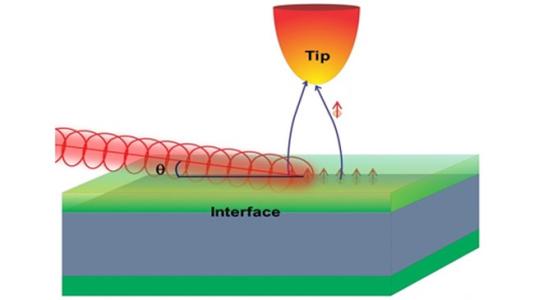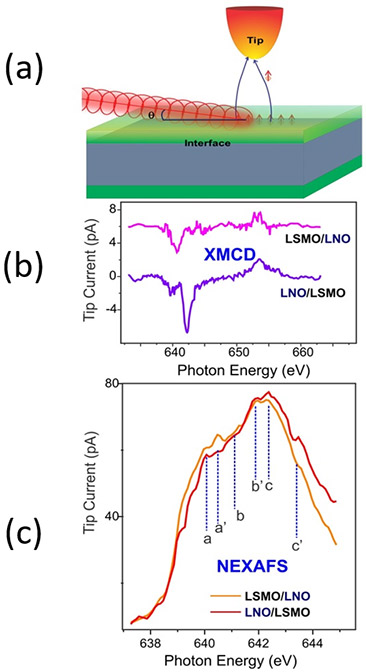
Scientific achievement
A scanning tunneling microscope is used for the first time to detect x-ray magnetic circular dichroism (XMCD) and near edge x-ray absorption fine structure (NEXAFS) signals of buried magnetic interfaces, and shows the order of superlattice layers is critical for interfacial magnetism.
Significance and impact
The feasibility of these nascent characterization techniques to detect buried magnetic interfaces, potentially to the atomic scale, is demonstrated.
Research details
- La0.67Sr0.33MnO3 (LSMO) and LaNiO3 (LNO) samples were grown using ozone assisted molecular beam epitaxy (MBE) at the CNM.
- Characterization was performed using synchrotron x-ray scanning tunneling microscopy (SX-STM), at 110 K substrate temperature without an applied magnetic field, at Sector 4-ID-C of the APS.
DOI: https://doi.org/10.1063/1.5031877
Work was performed at the Center for Nanoscale Materials and the Advanced Photon Source.
About Argonne’s Center for Nanoscale Materials
The Center for Nanoscale Materials is one of the five DOE Nanoscale Science Research Centers, premier national user facilities for interdisciplinary research at the nanoscale supported by the DOE Office of Science. Together the NSRCs comprise a suite of complementary facilities that provide researchers with state-of-the-art capabilities to fabricate, process, characterize and model nanoscale materials, and constitute the largest infrastructure investment of the National Nanotechnology Initiative. The NSRCs are located at DOE’s Argonne, Brookhaven, Lawrence Berkeley, Oak Ridge, Sandia and Los Alamos National Laboratories. For more information about the DOE NSRCs, please visit https://science.osti.gov/User-Facilities/User-Facilities-at-a-Glance.
Argonne National Laboratory seeks solutions to pressing national problems in science and technology. The nation’s first national laboratory, Argonne conducts leading-edge basic and applied scientific research in virtually every scientific discipline. Argonne researchers work closely with researchers from hundreds of companies, universities, and federal, state and municipal agencies to help them solve their specific problems, advance America’s scientific leadership and prepare the nation for a better future. With employees from more than 60 nations, Argonne is managed by UChicago Argonne, LLC for the U.S. Department of Energy’s Office of Science.
The U.S. Department of Energy’s Office of Science is the single largest supporter of basic research in the physical sciences in the United States and is working to address some of the most pressing challenges of our time. For more information, visit https://energy.gov/science.
